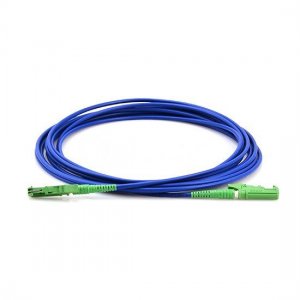
# Armored Fiber Cable: Enhanced Protection for High-Speed Data Transmission
## What is Armored Fiber Cable?
Armored fiber cable is a specialized type of fiber optic cable designed with additional protective layers to safeguard the delicate optical fibers inside. Unlike standard fiber cables, armored versions feature a robust metal or non-metallic armor layer that provides superior resistance to crushing forces, rodent attacks, and environmental hazards.
## Key Features of Armored Fiber Cables
### 1. Superior Physical Protection
The most distinctive feature of armored fiber cables is their protective armor layer, typically made of:
– Interlocking metal tape (usually steel or aluminum)
– Corrugated steel tape
– Non-metallic materials like Kevlar for special applications
### 2. Enhanced Durability
These cables are built to withstand:
– Heavy foot traffic in industrial environments
– Construction site hazards
– Underground installations with potential rodent threats
– Extreme temperature fluctuations
### 3. Flexible Design Options
Armored fiber cables come in various configurations:
– Indoor/outdoor rated versions
– Direct burial designs
– Aerial installation options
– Different fiber counts (single-mode or multimode)
## Applications of Armored Fiber Cables
### Industrial Environments
Manufacturing plants and industrial facilities often require the extra protection that armored cables provide against machinery, heavy equipment, and chemical exposure.
### Harsh Outdoor Installations
For outdoor applications where cables might be exposed to digging, animal interference, or extreme weather, armored fiber offers reliable protection while maintaining high-speed data transmission.
### Data Centers
Even in controlled environments like data centers, armored fiber is sometimes used in areas where cables might be subject to accidental damage from rolling equipment or foot traffic.
## Installation Considerations
When working with armored fiber cables, installers should consider:
– Proper grounding requirements for metallic armor
– Minimum bend radius specifications
– Specialized tools for armor removal during termination
– Weight considerations for aerial installations
## Future of Armored Fiber Technology
As demand for robust network infrastructure grows, we’re seeing innovations in armored fiber technology, including lighter-weight armor materials and improved flexibility without sacrificing protection. These advancements are making armored solutions more practical for a wider range of applications.
Keyword: armored fiber cable
Armored fiber cable represents the perfect marriage of high-speed data transmission capability with industrial-grade protection, ensuring reliable connectivity even in the most challenging environments.